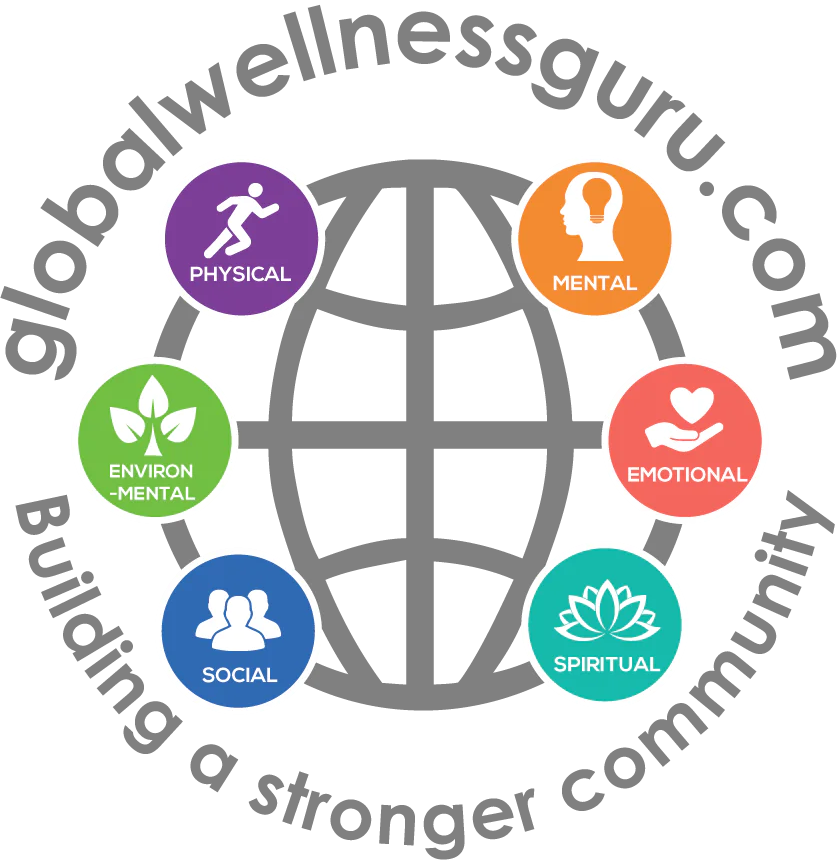Physical Wellness
- Home
- Physical Wellness
Physical Wellness
Caring for our physical health provides huge benefits to our quality of life. From having more energy to reducing disease risk, making physical wellness a priority impacts how we feel each day. On this page, we’ll look at what physical wellness entails, why it matters, and provide tips to improve it through positive lifestyle choices.
What is Physical Wellness?
Physical wellness refers to the health and vitality of our body. It involves lifestyle choices that prevent illness and optimize energy levels so we can thrive.
Making smart choices across all these areas helps us feel our physical best day-to-day. Physical wellness provides the vital foundation for experiencing life fully.
The U.S. National Library of Medicine notes physical wellness encompasses[1]:
- Eating nutritious foods in moderation
- Maintaining a healthy body weight
- Getting enough quality sleep
- Regular physical activity
- Abstaining from harmful substance use
- Responsible sexual health practices
- Effective hygiene habits
- Avoiding overexposure to environmental toxins
- Managing preexisting medical conditions
- Seeking preventative healthcare services
Why is Physical Wellness Important?
There are myriad benefits to nurturing our physical health:
- Increased longevity. Making healthy lifestyle choices helps prevent leading killers like heart disease, cancer, and stroke[2]. Physical vitality adds years to life.
- Higher energy levels. Eating nutritious whole foods, staying active, and getting enough sleep leaves us feeling energized and strong[3].
- Lower risk of chronic illness. A healthy lifestyle keeps diseases like diabetes, hypertension, and osteoporosis at bay[4].
- Better immune function. Regular activity, low stress, and a nutrient-dense diet help our body fight viruses, bacteria, and other pathogens.
- Improved mood. Physical health habits like exercise and healthy eating provide natural mood boosts and can help relieve anxiety and depression[5].
- Enhanced cognition. Aerobic fitness and nutrition support optimal brain function including concentration, memory, and quick thinking[6].
- Increased self-confidence. Feeling fit and full of energy allows us to feel our best inside and out.
The benefits of nurturing physical wellness are far-reaching. Our physical state impacts nearly everything we do. It’s the foundation that allows us to live an active, meaningful life.
Signs Your Physical Health Needs Attention
How can you gauge if it’s time to take action on improving your physical wellness? Some red flags include:
- Weight gain and especially belly fat accumulation
- Feeling sluggish, low energy, and chronic fatigue
- Muscle weakness and poor endurance
- Poor sleep habits like insomnia or frequent awakenings
- Frequent minor illnesses and slower recovery
- Lack of regular physical activity
- Unhealthy diet high in processed foods
- Developing a preventable health condition like hypertension
- Digestive issues, constipation, or diarrhea
- Dull skin, hair, and nails
- Low libido and sexual health problems
- Smoking and excessive alcohol intake
Paying attention if several of these become consistent issues provides motivation for positive lifestyle improvements to restore wellness. Don’t ignore the signals your body is sending.
12 Evidence-Based Ways to Improve Physical Wellness
The great news is that making simple healthy changes to daily habits can dramatically improve physical vitality. Here are 12 science-backed tips to get you started:

Follow a Nutritious Whole Foods Diet
A diet emphasizing fruits, vegetables, lean proteins, whole grains, nuts, seeds, and healthy fats provides maximum energy, fights disease, and keeps weight in check[7]. Limit sweets, fried foods, processed items, and sweetened drinks.

Stay Hydrated
Drinking enough water is essential for energy, skin health, proper digestion, clear thinking, and kidney function. Consume 8-12 glasses of water daily. Add lemon, mint, or fruit for flavor.

Prioritize High-Quality Sleep
Adults need 7-9 hours of quality sleep nightly for optimal health[8]. Establish a consistent bedtime routine. Make your room cool, dark and quiet. Avoid electronics before bed. Listen to your body’s need for rest.

Incorporate Regular Exercise
Aim for 150 minutes per week of moderate exercise like brisk walking or 75 minutes of vigorous exercise like running[9]. This substantially cuts disease risk and boosts immunity, brainpower, mood, and sleep quality. Find activities you enjoy and mix it up.

Manage Stress Levels
Unchecked stress harms physical health. Relaxation practices like yoga, deep breathing, massage, and meditation activate the body’s relaxation response to counter stress. Set boundaries and make time for hobbies too.

Maintain a Healthy Body Weight
Excess weight strains the body. Calculate your BMI to assess if weight loss would improve your health. Focus on permanent lifestyle changes over fads. Increase whole foods, activity, and sleep while reducing processed foods, alcohol, and sugary drinks.

Listen to Your Body’s Signals
Tune into symptoms like fatigue, cravings, hunger, aches, low mood, irritability, or digestive issues as red flags to make course corrections. Don’t ignore the messages your body is sending about its needs.

Foster Social Connections
Close relationships provide meaning and lessen stress which positively impacts health. Nurture friendships and intimacy. Join groups aligned with your interests or volunteer in your community. We’re wired for social wellness too.

Avoid Unhealthy Substances
Limit alcohol to 1 drink daily max for women, 2 for men. Avoid tobacco, illicit drugs, and misuse of medications or supplements. If addiction is present, seek professional treatment. Prioritize natural stress relief like walks outdoors.

See Your Doctor Regularly
Take charge of preventative care through annual checkups, cancer screenings, vaccinations, dental cleanings, and having medications reevaluated. Don’t skip routine care. Early detection of issues leads to better outcomes.

Practice Good Hygiene
Wash hands frequently, shower daily, brush and floss thoroughly, and wear clean clothes to avoid illnesses. Handle and prepare food safely. Disinfect household surfaces and declutter to minimize germs.

Reduce Environmental Toxin Exposure
Minimize exposure to substances like pesticides, heavy metals, air pollution, plastics, and other chemicals that may impact health[10]. Eat organic when possible, properly ventilate and filter air, use natural cleaners, and avoid plastic food containers.
Focus on small, realistic steps forward vs. major overhauls. Over time, consistently making physical wellness a priority will pay off through improved energy, resilience, and longevity.
Frequently Asked Questions About Physical Wellness
What are the most important lifestyle factors for longevity?
The top controllable factors allowing people to live long, healthy lives include not smoking, moderate alcohol intake, regular exercise, healthy diet, strong social ties, stress management, sufficient sleep, and avoiding obesity[11]. Making these priorities adds years of wellness.
If I could only make one positive change, what should it be?
If you had to pick just one habit, committing to 30 minutes of brisk activity daily provides the biggest bang for your buck. Regular exercise fights nearly all major diseases, elevates mood, boosts energy, helps manage weight, and promotes quality sleep[12]. It’s one of the best things you can do for longevity.
What are common barriers to making healthy lifestyle changes?
Obstacles like lack of time, the temptation to overindulge, social pressures, stress, fatigue, negative thinking, lack of motivation, and unrealistic expectations all hinder change. Identify your unique barriers, then take small, manageable steps to remove them one by one. Progress > perfection.
How long does it take to see benefits from diet and exercise changes?
You may notice subtle but positive changes in energy, sleep, mood, and digestion within 1-2 weeks. More significant benefits like improved endurance, easier weight management, and reduced disease risk occur after 6-8 weeks. Stick with new habits through early challenges to allow benefits to unfold.
What are quick ways to sneak more activity into my day?
Take the stairs, do jumping jacks during commercials, park farther away, walk laps inside the mall, have walking meetings, do squats while brushing teeth, use resistance bands at your desk, put on music and dance, and take short walk breaks hourly. It all adds up!
How can I eat healthy on a tight budget and limited time?
Prep produce in bulk on weekends, buy frozen veggies, purchase cheaper proteins like eggs, eat beans and lentils, choose in-season produce, buy generic brands, pack lunches, and cook large batches of soups or grains to have leftovers. With a plan, you can eat well on any budget.
What are signs my workout routine may be too intense?
Watch for excessive fatigue, trouble recovering between workouts, persistent muscle soreness, loss of motivation, changes in appetite or sleep, and feeling an urgent need for rest days. Scale back intensity if you notice these issues consistently. Rest is crucial for results.
Should I take dietary supplements for optimal health?
Supplements are unnecessary if eating a balanced diet rich in whole foods. Target specific deficiencies only if confirmed by your doctor. Some supplements like vitamin D, omega-3s or probiotics may provide benefits – but their use requires thorough research first. Don’t assume more is better.
How can I boost motivation for making healthy lifestyle changes?
Set clear, realistic goals for changes to make. Track progress daily. Join workout classes or nutrition groups for built-in accountability. Use apps to log food and activity. Reward milestones reached. Find an accountability buddy. Stay focused on all the benefits to inspire you through challenges.
In Summary
Caring for your physical well-being is one of the best gifts you can give yourself. It provides the vital foundation for an energized, resilient life. Don’t wait until chronic issues set in – take
proactive steps today. Your future self will thank you. What’s one habit you can improve this week to become your healthiest, most vibrant version? Your wellness journey starts now.
References:
[1] National Library of Medicine. (2022). Your guide to healthy living. MedlinePlus. https://medlineplus.gov/healthyliving.html
[2] Myers, J. (2003). Cardiology patient pages. Exercise and cardiovascular health. Circulation, 107(1), e2-5. https://doi.org/10.1161/01.cir.0000048890.59383.8d
[3] Penedo, Frank J, and Jason R Dahn. “Exercise and well-being: a review of mental and physical health benefits associated with physical activity.” Current opinion in psychiatry vol. 18,2 (2005): 189-93. doi:10.1097/00001504-200503000-00013
[4] Warburton, D. E., Nicol, C. W., & Bredin, S. S. (2006). Health benefits of physical activity: the evidence. Cmaj, 174(6), 801-809. https://doi.org/10.1503/cmaj.051351
[5] Carek, P. J., Laibstain, S. E., & Carek, S. M. (2011). Exercise for the treatment of depression and anxiety. The International Journal of Psychiatry in Medicine, 41(1), 15-28.
https://doi.org/10.2190/PM.41.1.c
[6] Hillman, C. H., Erickson, K. I., & Kramer, A. F. (2008). Be smart, exercise your heart: exercise effects on brain and cognition. Nature reviews neuroscience, 9(1), 58-65.
https://doi.org/10.1038/nrn2298
[7] Katz, D.L. & Meller, S. (2014). Can we say what diet is best for health? Annual Review of Public Health, 35, 83-103.
https://doi.org/10.1146/annurev-publhealth-032013-182351
[8] Watson, N.F. et al. (2015). Recommended amount of sleep for a healthy adult: a joint consensus statement of the American Academy of Sleep Medicine and Sleep Research Society. Sleep, 38(6), 843–844. https://doi.org/10.5665/sleep.4716
[9] U.S. Department of Health and Human Services. (2018). Physical activity guidelines for Americans, 2nd edition.
https://health.gov/sites/default/files/2019-09/Physical_Activity_Guidelines_2nd_edition.pdf
[10] Kim, Ki-Hyun et al. “The use of cell phone and insight into its potential human health impacts.” Environmental monitoring and assessment vol. 188,4 (2016): 221. doi:10.1007/s10661-016-5227-1
[11] Wilmot, E.G., Edwardson, C.L., Achana, F.A. et al. (2012). Sedentary time in adults and the association with diabetes, cardiovascular disease and death: systematic review. Diabetologia, 55, 2895–2905.
https://doi.org/10.1007/s00125-012-2677-z
[12] Reiner, M., Niermann, C., Jekauc, D., & Woll, A. (2013). Long-term health benefits of physical activity–a systematic review of longitudinal studies. BMC public health, 13(1), 1-9.
https://doi.org/10.1186/1471-2458-13-813
